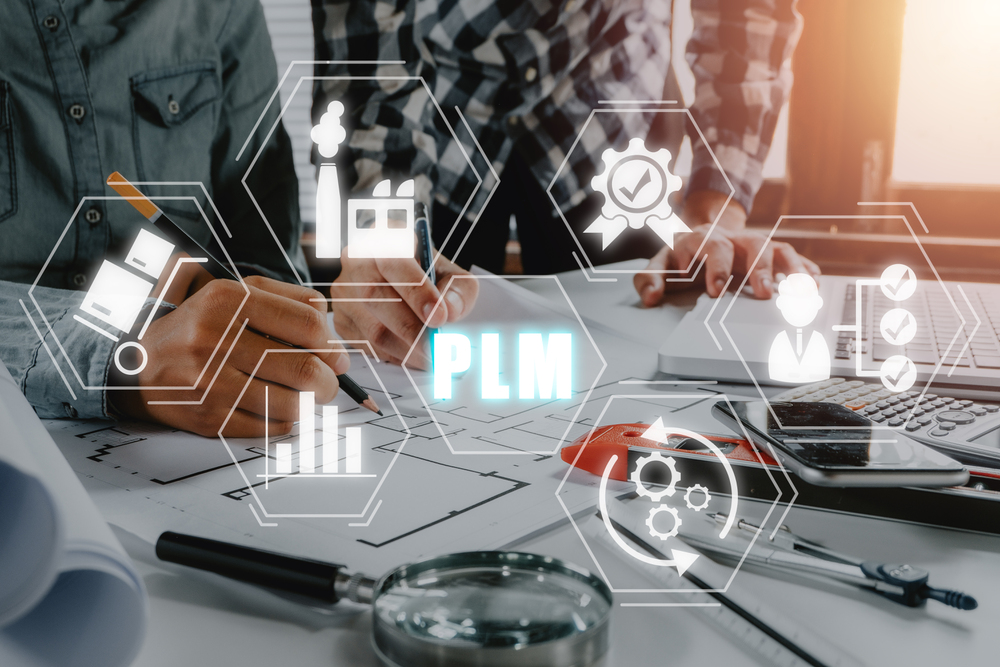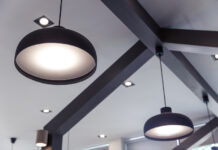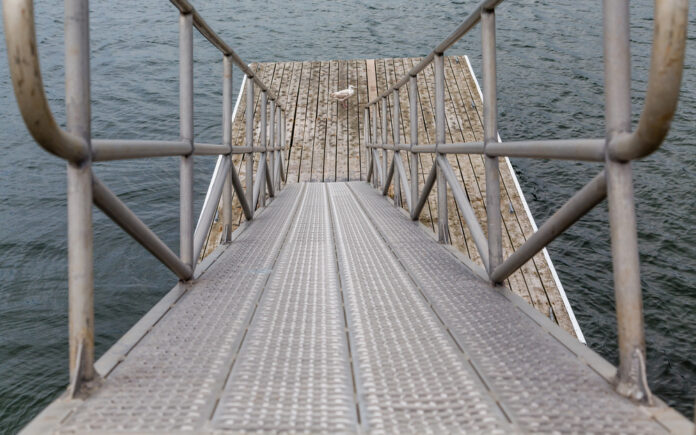Urban waterfronts have always been centers of commerce, culture, and community. As cities expand and rethink how they interact with rivers, lakes, and coastlines, the infrastructure that connects people to water must balance durability, design, and sustainability. Increasingly, aluminum docks and bridges are playing a leading role in how these spaces are planned and constructed. From floating marinas to pedestrian walkways, aluminum solutions allow urban areas to rethink how public spaces near water can be used.
Advances in engineering and design have made aluminum one of the most practical and reliable materials for waterfront infrastructure.
Let’s learn why.
Why Waterfront Infrastructure Matters for Cities
Urban waterfronts are more than recreational spots. They serve as transportation hubs, public gathering areas, and vital components of climate adaptation strategies.
Cities such as Montreal, Toronto, and Seattle have used waterfront redesigns to improve resilience against flooding and promote public access to natural areas.
However, investing in smarter waterfront infrastructure raises several questions:
- How can materials extend the lifespan of docks and bridges while reducing maintenance?
- What role does engineering play in balancing structural integrity with aesthetic appeal?
- Can lightweight, modular systems improve emergency response or adaptability?
Aluminum-based structures address these challenges by combining technical efficiency with practical usability.
Aluminum? Exceeding limitations.
Steel and wood have long dominated dock and bridge construction, yet both materials have limitations.
- Steel is heavy, prone to corrosion, and costly to maintain.
- Wood is vulnerable to rot, pests, and weathering.
Aluminum, by contrast, is strong, lightweight, and resistant to corrosion.
Comparison of Common Waterfront Materials
| Material | Durability | Maintenance Needs | Typical Lifespan | Suitability for Urban Use |
| Wood | Moderate | High (sealing, replacement) | 10-20 years | Limited (high upkeep) |
| Steel | High | Moderate to High (corrosion protection) | 30-50 years | Strong but heavy |
| Aluminum | High | Low (little to no maintenance) | 50+ years | Excellent (lightweight, adaptable) |
This comparison shows why aluminum has gained prominence in civil, maritime, and recreational infrastructure. Its longevity significantly reduces lifecycle costs for municipalities and private operators.
Applications in Urban Waterfronts
From marinas to pedestrian bridges, aluminum’s adaptability makes it an ideal material for diverse waterfront projects
| Application | Key Features | Benefits for Urban Use | Example Scenarios |
| Floating Docks and Marinas | Adjustable with water-level changes; stable aluminum platforms | Long lifespan, low maintenance, safe for commercial and recreational boating | City marinas, ferry terminals, waterfront parks |
| Pedestrian Bridges | Lightweight yet strong; meets strict engineering codes; customizable designs | Improves walkability, adds architectural appeal, supports urban mobility | Riverwalk crossings, park connectors, city waterfront redevelopments |
| Emergency Response Infrastructure (Bridge in a Box) | Modular aluminum units; fast deployment without heavy machinery | Restores access quickly during crises, portable, highly durable | Flood recovery zones, temporary crossings in disaster-hit areas |
Engineering and Compliance Standards
The strength of aluminum infrastructure lies not just in the material itself but in the engineering rigor behind each project. Structures designed to meet local, regional, and national codes carry professional assurance for safety and durability.
Companies have to adhere to ISO 9001:2015 certification, emphasizing quality objectives and preventive measures. Welding and fabrication also follow stringent standards, guaranteeing structural soundness even in demanding environments. These benchmarks ensure that waterfront installations meet the highest standards, whether in civil, maritime, or industrial use.
Did You Know?
ISO 9001:2015 is an internationally recognized standard for quality management systems (QMS). It was developed by the International Organization for Standardization (ISO) and sets out the criteria organizations must follow to demonstrate their ability to consistently provide products and services that meet customer and regulatory requirements.
Sustainability and Environmental Advantages
Waterfront projects face scrutiny regarding their environmental impact. Aluminum offers several sustainability benefits:
-
Recyclability:
Aluminum can be recycled indefinitely without losing strength, reducing the need for raw material extraction.
-
Reduced Maintenance Chemicals:
Unlike wood, aluminum does not require preservatives or treatments that may leach into water.
-
Lower Carbon Footprint in Transport:
Its lightweight nature makes transportation and installation less resource-intensive compared with steel.
By aligning infrastructure development with environmental priorities, aluminum docks and bridges contribute to urban sustainability strategies.
Social Value
Waterfronts are public spaces, and design must appeal to both functionality and aesthetics. Aluminum allows architects and engineers to integrate sleek lines and modern forms without sacrificing durability. Cities benefit from infrastructure that is not only practical but also contributes to the identity of a place.
According to Alexandre de la Chevrotière, “Aluminum’s lightweight properties and resistance to corrosion make it an ideal choice for urban environments where design and performance must go hand in hand.”
This balance supports tourism, recreation, and community use, reinforcing the waterfront as a hub of civic life.
Applications in Urban Waterfronts
Most of these were done by the leaders in aluminum dock building, MAADI Group.
Old Port Cove Marina – Florida, USA
-
Project Type:
Aluminum Floating Docks for an upscale marina
-
Context:
In North Palm Beach, the private club now known as Safe Harbor Old Port Cove features a full-service marina for vessels ranging from 60 to 200 feet, complete with modern amenities. MAADI Group designed and installed high-performance aluminum floating docks with hardwood decking and steel piles.
-
Why It Matters:
This example demonstrates how aluminum docks deliver refined aesthetics, withstand high-traffic demand, and resist saltwater corrosion – all while supporting diverse vessel sizes in a luxury setting.
CocoCay – Bahamas
-
Project Type:
Floating Aluminum Dock System with Branching Design
-
Context:
For Royal Caribbean’s private island resort, Perfect Day at CocoCay, MAADI Group installed an aluminum floating dock system featuring hardwood decking, wooden piles, and branching layouts that offer both style and privacy around floating cabanas.
-
Why It Matters:
This example highlights aluminum’s adaptability in resort settings – delivering custom, luxury-friendly infrastructure that handles saltwater conditions with minimal maintenance and maximum visual appeal.
Is it the Future of Waterfront Infrastructure?
As cities adapt to climate change, waterfront infrastructure must serve both practical and protective roles. Rising water levels, stronger storms, and increased public use demand durable solutions. Aluminum docks and bridges meet these requirements while offering scalability for future urban projects.
Emerging opportunities include:
- Integration of solar power into dock systems.
- Expansion of lightweight pedestrian bridges in dense urban areas.
- Development of modular systems for rapid installation in growing cities.
The ability to combine engineering standards with sustainable materials positions aluminum as a cornerstone of modern waterfront development.
Final Remarks
Waterfronts define a city’s relationship with water, shaping how residents and visitors interact with natural and built environments. Aluminum docks and bridges are proving to be effective tools for modern infrastructure, delivering longevity, sustainability, and aesthetic value. Through careful engineering and compliance with international standards, aluminum-based solutions are enabling cities to expand access to waterways while reducing long-term costs.
As urban planners and engineers look ahead, aluminum remains one of the most reliable pathways to smarter, more adaptable waterfronts.
FAQs
1. Why are aluminum docks and bridges important for urban waterfronts?
Aluminum structures provide durability, lightweight design, corrosion resistance, and low maintenance, making them ideal for city waterfronts that require reliable, long-lasting infrastructure.
2. How does aluminum compare to steel and wood for waterfront construction?
| Material | Durability | Maintenance | Lifespan | Suitability for Urban Use |
|---|---|---|---|---|
| Wood | Moderate | High | 10–20 years | Limited |
| Steel | High | Moderate–High | 30–50 years | Strong but heavy |
| Aluminum | High | Low | 50+ years | Excellent |
Aluminum surpasses steel and wood in corrosion resistance, lifespan, and adaptability, reducing lifecycle costs for municipalities and private operators.
3. What types of waterfront projects benefit from aluminum?
-
Floating docks and marinas: Adjustable for water levels, low maintenance, ideal for commercial and recreational boating.
-
Pedestrian bridges: Lightweight, strong, customizable, and compliant with engineering standards.
-
Emergency response infrastructure: Modular, quick-to-deploy units suitable for disaster recovery or temporary crossings.
4. How does aluminum support sustainability in waterfront infrastructure?
Aluminum is infinitely recyclable, requires no harmful chemical treatments, and its lightweight nature reduces transportation emissions. This aligns urban development with environmental priorities.
5. What standards ensure the safety and quality of aluminum waterfront structures?
Aluminum docks and bridges adhere to ISO 9001:2015 for quality management, along with strict welding and fabrication standards. This ensures structural integrity and compliance with local, regional, and national engineering codes.
6. Can aluminum infrastructure enhance social and aesthetic value?
Yes. Aluminum allows sleek, modern designs while maintaining durability, improving public space aesthetics, supporting tourism, recreation, and community engagement on waterfronts.
7. Are there real-world examples of aluminum waterfront infrastructure?
-
Old Port Cove Marina (Florida, USA): Aluminum floating docks accommodate vessels from 60–200 feet, withstand saltwater corrosion, and require minimal maintenance.
-
CocoCay (Bahamas): Branching aluminum floating dock system supports luxury resort operations with high adaptability and aesthetics.
8. Is aluminum the future of urban waterfront infrastructure?
Yes. Its combination of sustainability, adaptability, and compliance with engineering standards makes aluminum ideal for expanding waterfront access, climate resilience, and modular urban solutions.
Find a Home-Based Business to Start-Up >>> Hundreds of Business Listings.
















































